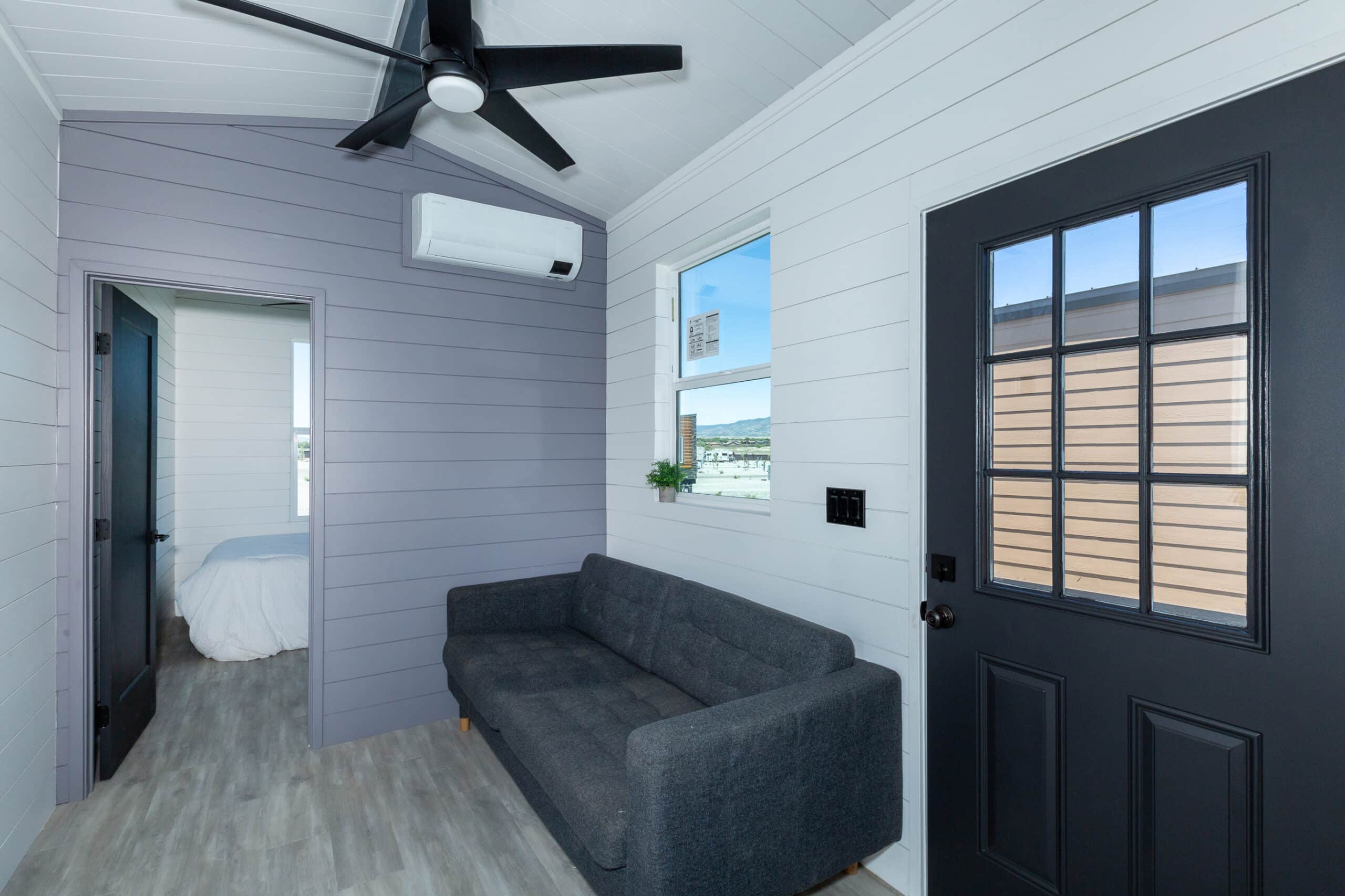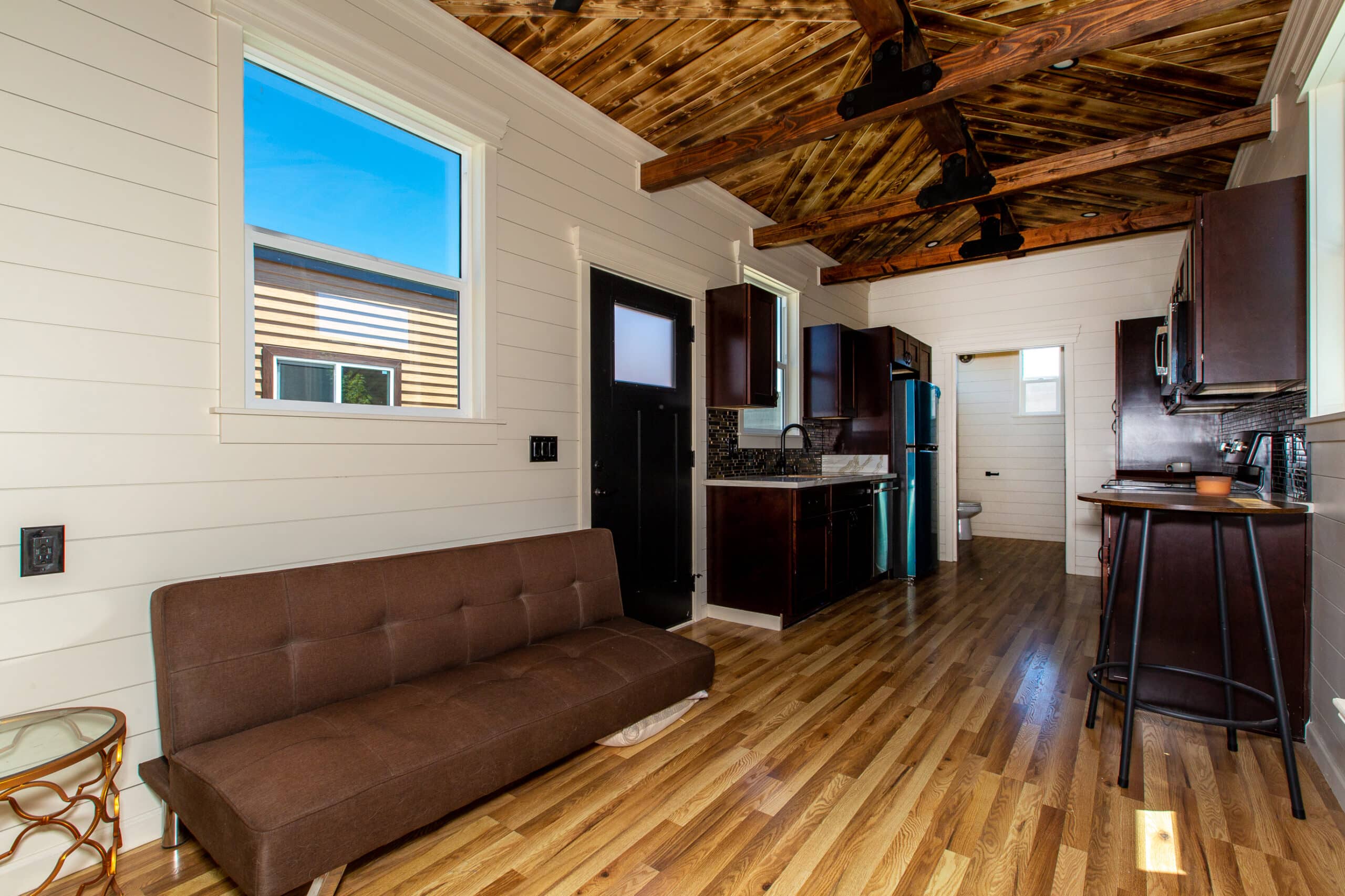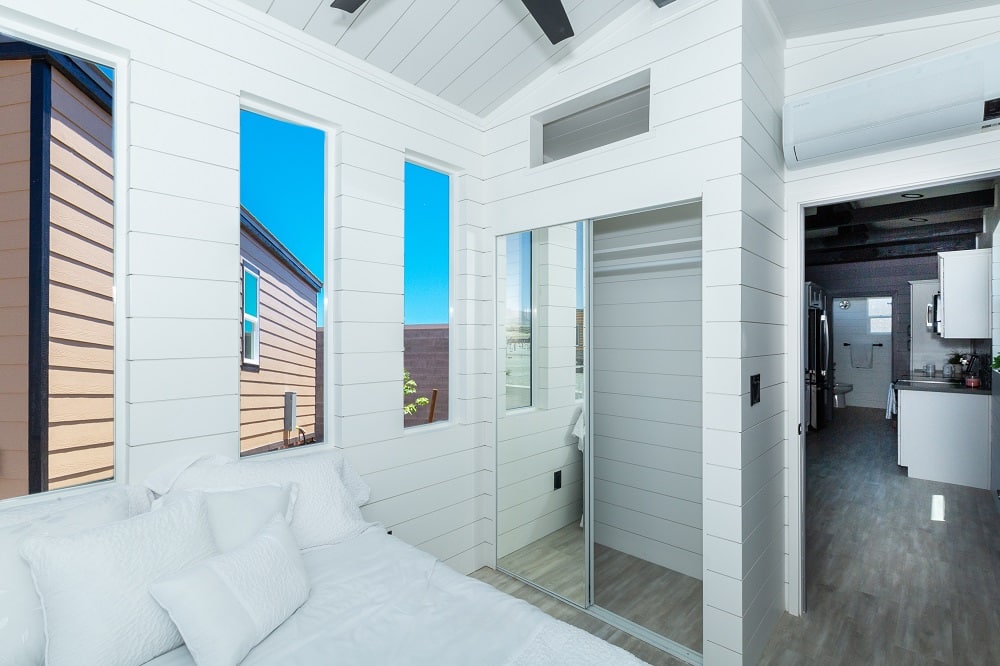Tiny houses are becoming increasingly popular, as they offer a unique and more affordable living space. One of the most important considerations when designing or selecting a tiny house is how to heat it. Heating your tiny house can be tricky, as there are several different types of heaters available and each has its own advantages and disadvantages. In this article, we will discuss the different types of tiny house heaters, how to choose the right one for your needs, and other posts that may interest you.
For those who are looking for an eco-friendly option, electric heaters are a great choice. They use electricity to generate heat and can be powered by solar energy or other renewable sources. Wood stoves are another popular option for tiny houses, as they provide an efficient source of heat while also providing a cozy atmosphere. Propane heaters are also an option, but they require regular maintenance and may not be suitable for all climates. Heat pumps are a newer type of heater that uses air from outside the home to generate warmth inside.
No matter which type of heater you choose, it’s important to consider factors such as cost, efficiency, safety, and installation requirements before making your decision. We will discuss these factors in more detail in the next section. Additionally, if you’re looking for more information about tiny house heating solutions, there are plenty of other posts on this topic that could interest you.
Types of Tiny House Heaters
tiny houses come with many unique challenges when it comes to heating. Traditional heating systems are often too large and expensive for tiny homes, so many people look for smaller, more efficient options. There are a variety of different types of tiny house heaters that can provide adequate warmth in a small space.
Electric Heaters
Electric heaters are the most common type of heater used in tiny homes. They are usually small, lightweight, and easy to install. Electric heaters can be powered by either electricity or batteries, making them very versatile. They typically have adjustable temperature settings and some even come with thermostats so you can control the temperature more precisely. Electric heaters are also relatively inexpensive compared to other types of heaters. The downside is that they may not be as efficient as other types of heaters and require regular maintenance to keep them running smoothly.
Wood Stoves
Wood stoves are another popular option for tiny house heating. Wood stoves provide a cozy atmosphere and can be used to cook food as well as provide warmth. They are usually built into the wall or floor of the tiny home and require regular maintenance such as cleaning out ashes and refueling the firewood supply. Wood stoves also require proper ventilation in order to work properly and safely, so make sure your tiny home has adequate ventilation before installing one.
Propane Heaters
Propane heaters are another great option for tiny homes because they are relatively small, lightweight, and easy to install. Propane heaters use propane gas to generate heat which makes them very efficient at providing warmth quickly. However, propane gas is flammable so these types of heaters must be used with caution and proper safety measures must be taken when using them in a tiny home.

Heat Pumps
Heat pumps are an energy-efficient option for heating a tiny home but they tend to be more expensive than other types of heaters. Heat pumps work by transferring warm air from outside into the tiny home using a compressor system which helps reduce energy costs over time since no fuel is required to generate the warm air inside the home. Heat pumps also require regular maintenance such as cleaning filters regularly in order to keep them running efficiently.
No matter which type of heater you choose for your tiny home, it’s important to make sure it meets all safety standards and regulations before installing it in your space. It’s also important to consider how much space you have available in your tiny home before deciding on a particular type of heater since some may take up more room than others due to their size or design features.
Tiny homes require unique heating solutions; electric, wood, propane and heat pump heaters
are popular options, each with pros and cons. Proper safety and maintenance are essential.
How to Choose the Right Tiny House Heater
When it comes to choosing the right tiny house heater, there are several factors to consider. The size of your tiny house, the climate you live in, and how often you plan on using the heater are all important aspects to keep in mind. Additionally, it’s important to understand the different types of heaters available so that you can make an informed decision.
The most common types of heaters for tiny houses include electric heaters, wood stoves, propane heaters, and heat pumps. Each type has its own advantages and disadvantages that must be weighed when making a decision.
Electric Heaters
Electric heaters are one of the most popular options for tiny houses due to their low cost and ease of installation. They come in a variety of sizes and can be used as either primary or supplemental heating sources. Electric heaters are typically more energy efficient than other types of heating systems and do not require any additional ventilation or exhaust systems. However, they can be expensive to operate depending on electricity rates in your area.
Wood Stoves
Wood stoves provide a unique atmosphere in a tiny house but require more maintenance than electric or propane heaters. They require regular cleaning and maintenance to ensure proper operation and efficiency. Wood stoves also need adequate ventilation in order to prevent smoke from entering the living space. Additionally, wood stoves generate a lot of heat which may cause excessive condensation during cold months if not properly vented outside.
Propane Heaters
Propane heaters are becoming increasingly popular among tiny house owners due to their portability and ease of use. Propane is relatively inexpensive compared to other fuel sources such as electricity or wood, but must be refilled regularly depending on usage levels. Propane heaters can also produce significant amounts of carbon monoxide if not installed correctly or used improperly, so it’s important to follow all safety precautions when using them in your home.
Heat Pumps
Heat pumps are another option for heating a tiny house but require more specialized installation than other types of heating systems. Heat pumps use electricity to transfer hot air from one location (outside) into another (inside). They are generally more energy efficient than other heating systems but can be expensive to install and maintain due to their complexity. Additionally, they require regular servicing by a qualified technician in order for them to operate at peak efficiency levels.
Choosing the right tiny house heater depends on many factors including climate conditions, budget constraints, desired level of comfort, and personal preference. It’s important to research all available options before making a final decision so that you can find the best solution for your needs.
Consider size, climate, usage frequency, & type of heater (electric, wood stove, propane, or heat pump) to choose the best option for your tiny house.
Other Posts That Could Interest You
Tiny House Heating Tips
When it comes to heating your tiny house, there are a few tips you should keep in mind. First, make sure that you have adequate insulation to prevent heat loss. Additionally, consider using multiple types of heaters to ensure that your entire space is heated evenly. Lastly, you should take into account the size of your tiny house when choosing a heater – too large and it will be inefficient; too small and it won’t provide enough warmth.

Tiny House Cooling Solutions
If you live in a warm climate, then cooling your tiny house can be just as important as heating it. There are several solutions available, such as fans, air conditioning units, and evaporative coolers. It’s important to choose the right solution for your needs – some may provide more efficient cooling than others depending on the size of your home and the local climate.
Tiny House Plumbing Solutions
Plumbing is an essential part of any tiny house build. There are several options available for how to best set up the plumbing in your home, such as traditional water lines or off-grid systems like graywater recycling or composting toilets. Additionally, you should also consider water conservation techniques such as low-flow fixtures or rainwater harvesting.
Tiny House Electrical Systems
Electrical systems are another key component of any tiny house build. You will need to choose between either connecting to the grid or going completely off-grid with solar power or other renewable energy sources. Additionally, you should also consider wiring safety measures such as GFCI outlets and surge protectors.


